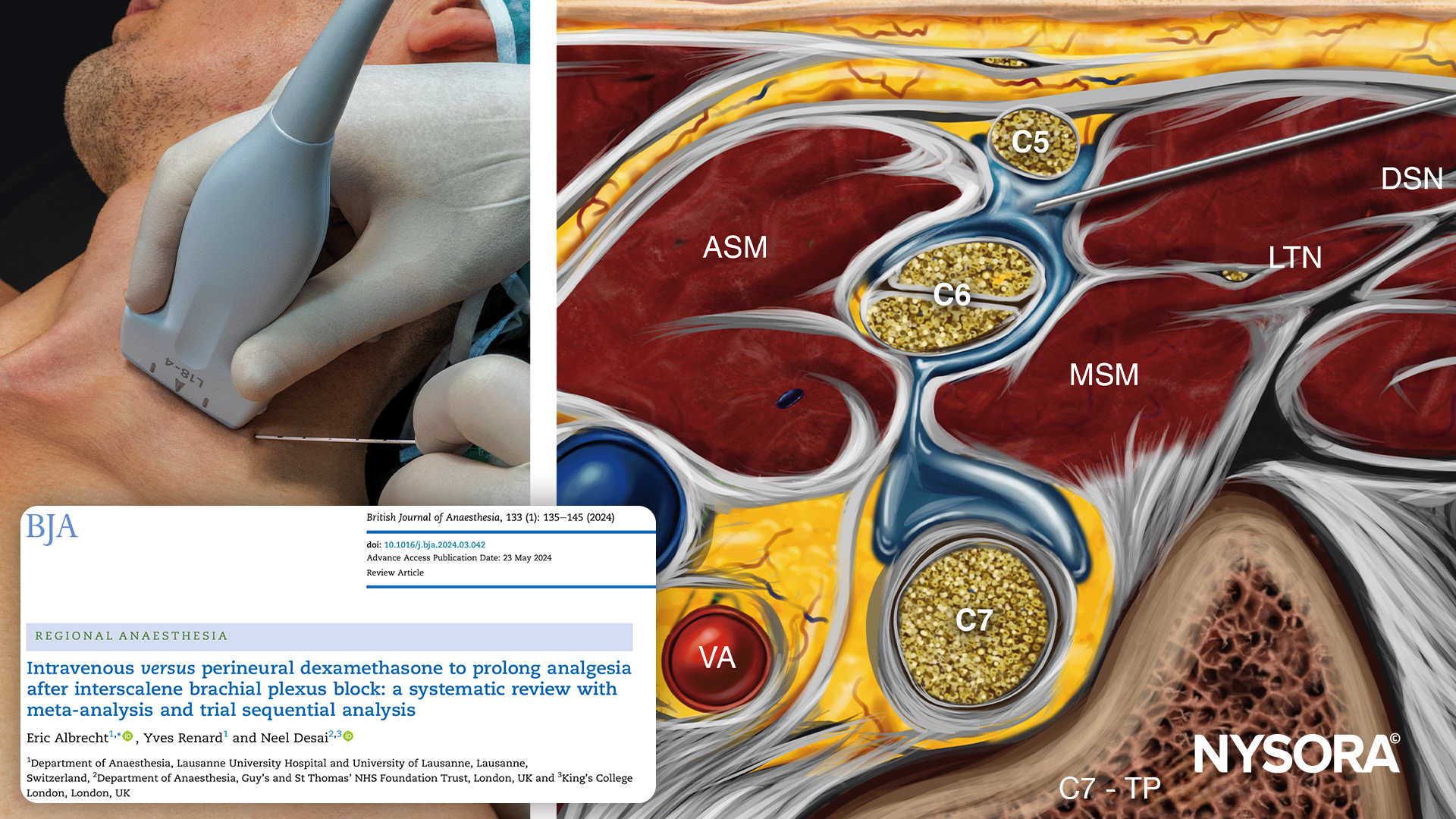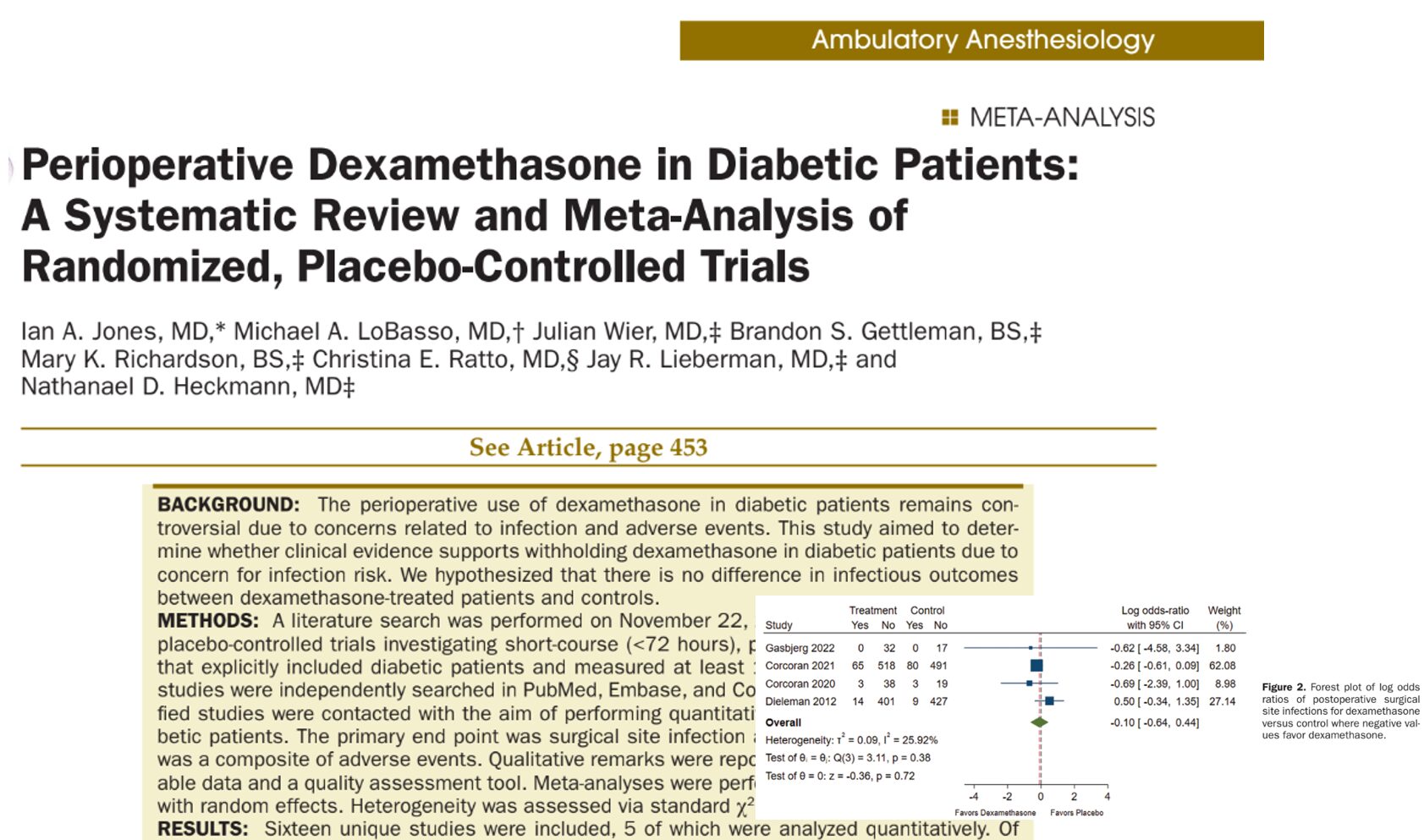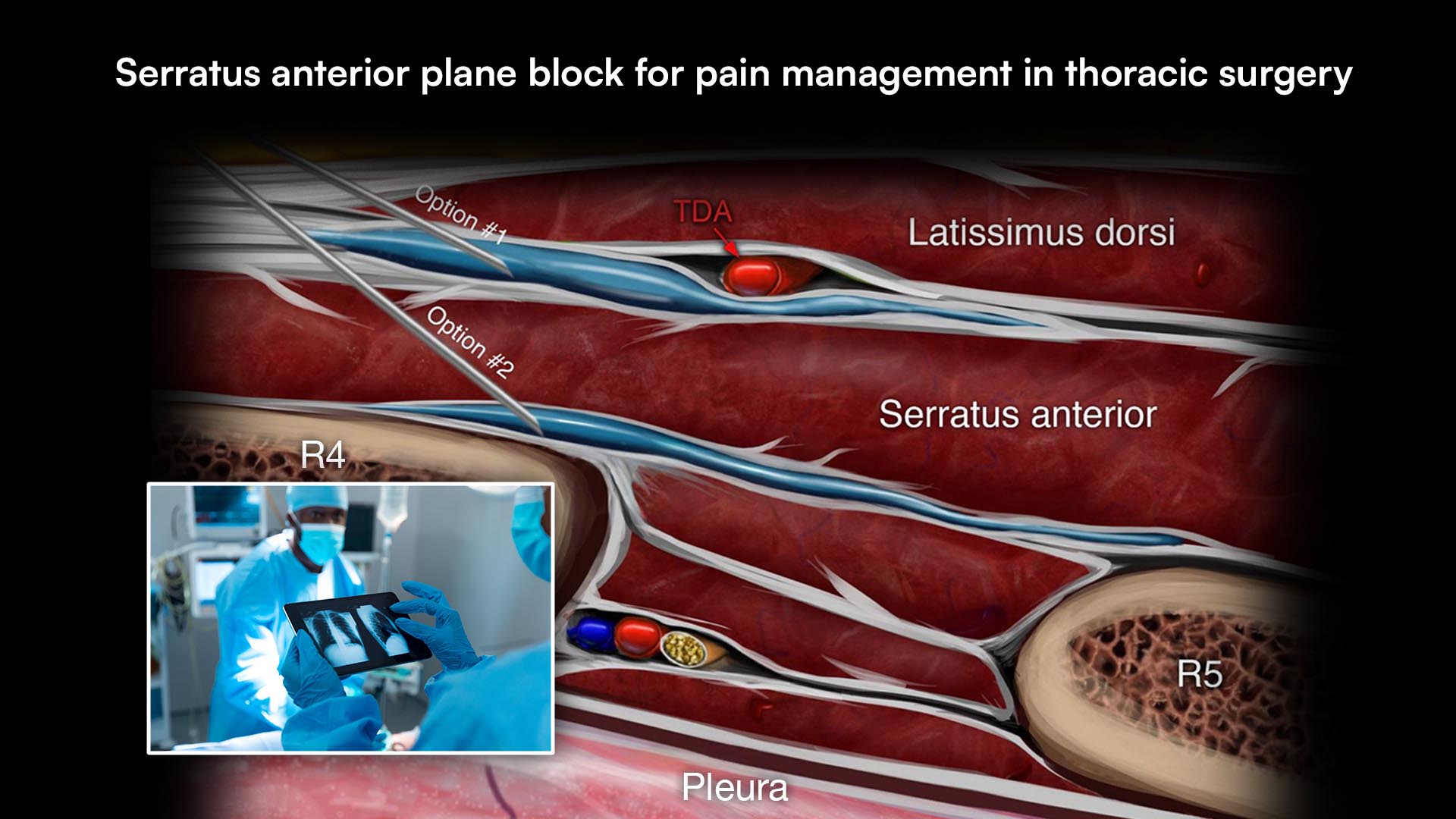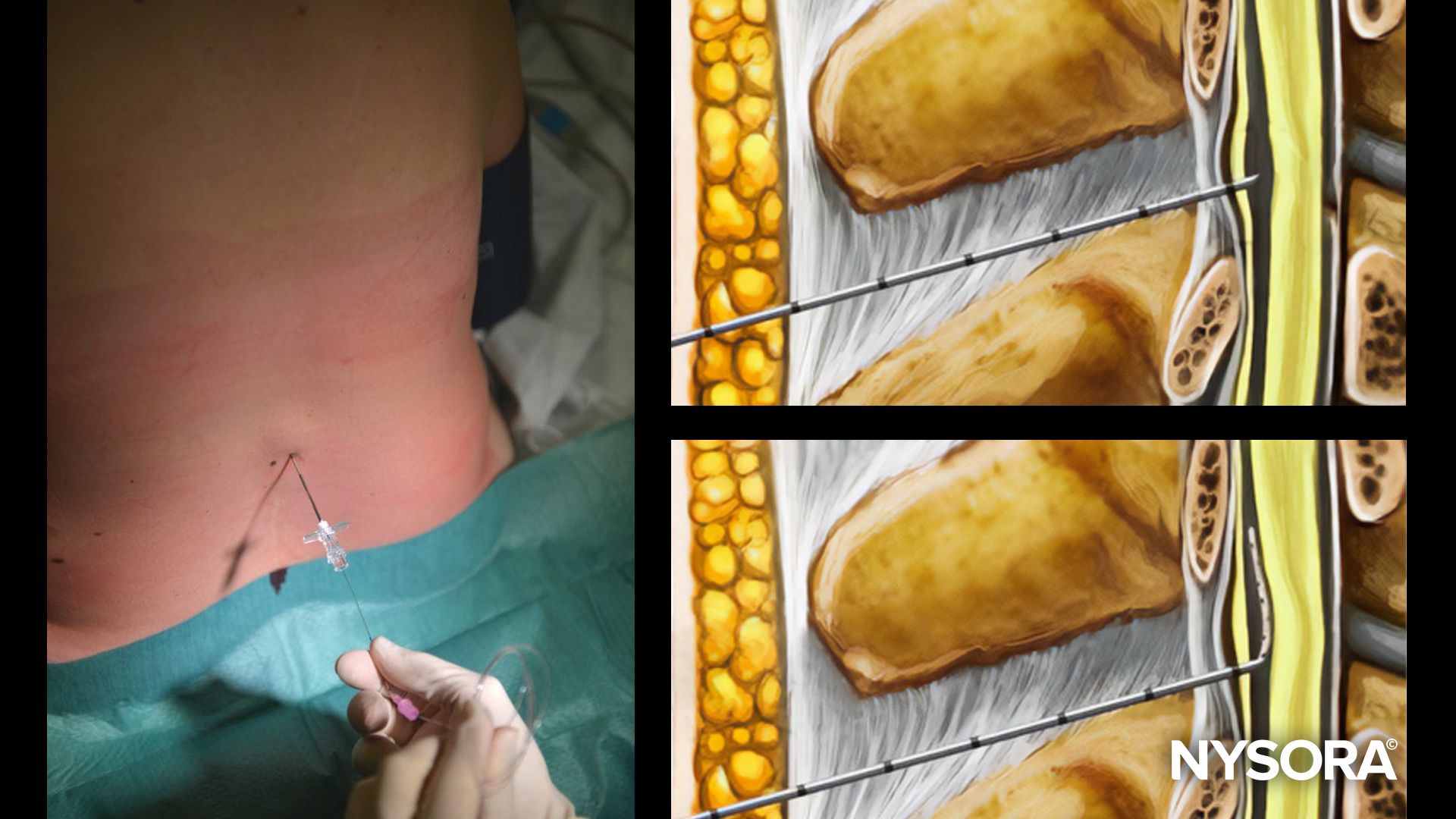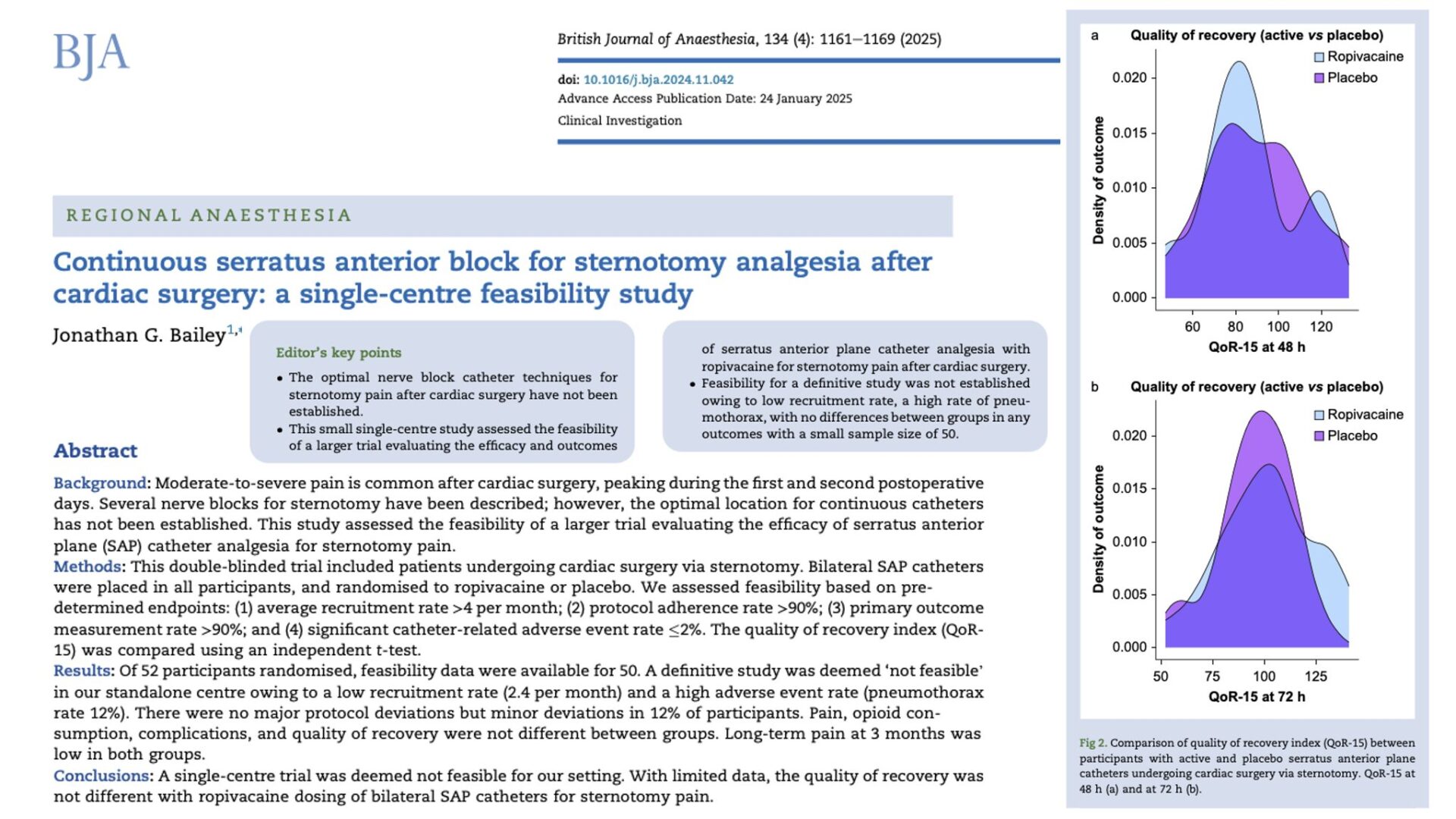Introduction
The interscalene brachial plexus block is a cornerstone for managing postoperative pain, particularly after shoulder surgeries. Enhancing the duration of analgesia is critical to patient comfort and recovery, and dexamethasone, a potent steroid, has been shown to play a significant role in this enhancement. However, the optimal route of administration—intravenous (IV) versus perineural—remains a topic of debate. This news post delves into a comprehensive systematic review and meta-analysis that compares these two administration routes, aiming to provide clarity for clinicians.
Study overview
- Objective: To compare the efficacy of IV and perineural dexamethasone in prolonging analgesia after interscalene brachial plexus block.
- Design: A systematic review, meta-analysis, and trial sequential analysis.
- Participants: 11 trials involving 1145 patients undergoing shoulder surgery.
- Primary outcome: Duration of analgesia.
- Secondary outcomes: Onset time of sensory and motor blockade, pain scores at various time intervals, cumulative opioid consumption, and incidence of adverse effects.
Key Findings
- Perineural dexamethasone significantly increased the duration of analgesia by an average of 2 hours compared to IV dexamethasone.
- Perineural administration also decreased the onset time for both sensory and motor blockade.
- Perineural dexamethasone resulted in lower pain scores at 12 hours post-surgery.
- No significant differences were observed in cumulative opioid consumption between the two groups.
- There were no significant differences in adverse effects, including nausea, vomiting, hyperglycemia, infection, and neurological complications.
Discussion
The findings suggest that while perineural dexamethasone offers a modest increase in analgesia duration, the clinical significance of this difference is debatable. Given the off-label status of perineural administration and the risk of crystallization when mixed with certain local anesthetics like ropivacaine, intravenous administration may be the safer and more practical option for most clinical settings.
Conclusion
This comprehensive review highlights the nuanced benefits and risks associated with the administration routes of dexamethasone in prolonging analgesia after interscalene brachial plexus block. While perineural administration may offer slightly longer analgesia, intravenous administration is recommended due to its safety profile and practicality.
For more detailed information, refer to the full article in the British Journal of Anaesthesia.
Albrecht E, Renard Y, Desai N. Intravenous versus perineural dexamethasone to prolong analgesia after interscalene brachial plexus block: a systematic review with meta-analysis and trial sequential analysis. Br J Anaesth. 2024;133(1):135-145.
For more information on the interscalene brachial plexus block and the complete guide to the most frequently used nerve blocks, enroll in the Regional Anesthesia Manual e-Course on the NYSORA website or download the Nerve Blocks App HERE, and you can also find it in the book format on Amazon.
